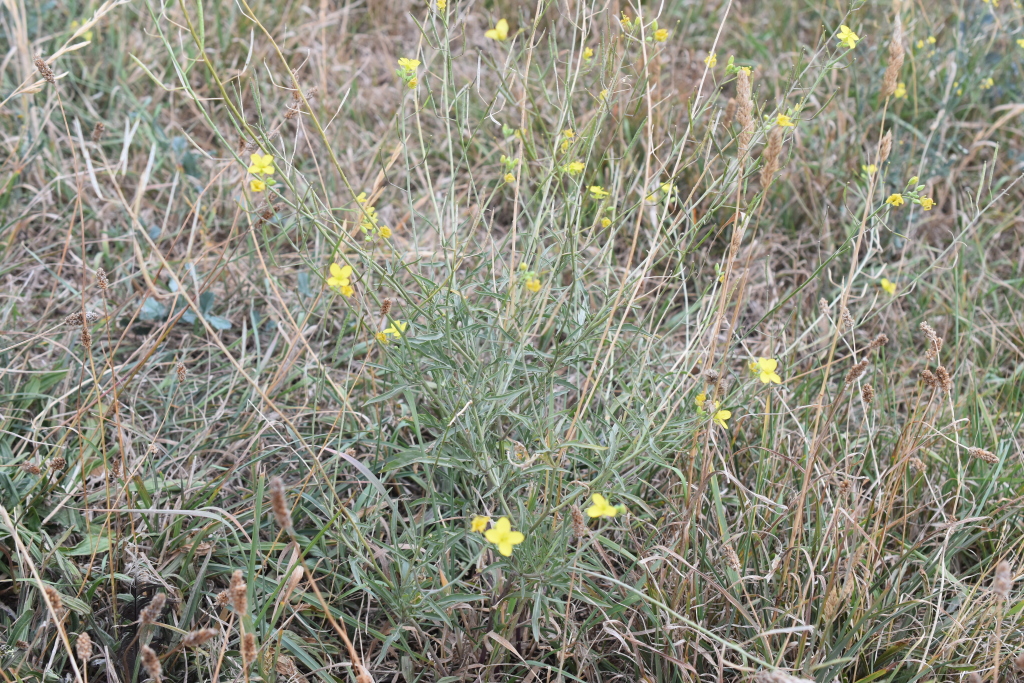Diplotaxis tenuifolia
(L.) DC. Sand RocketPerennial, glabrous and glaucous. Stems erect, 20–80 cm high. Basal leaves absent (except in seedling); stem leaves variable, lower ones petiolate, to 17 cm long, becoming smaller above, with pinnate, linear lobes, or coarsely toothed, or entire. Sepals 4–7 mm long, outer pair half spreading, inner pair erect; petals 8–15 mm long, lemon-yellow, tapering to claw; ovary pedicellate. Fruit erect to spreading, appressed to stem or rarely spreading obliquely, 2–6 cm long (including beak), 1–2.5 mm wide, on 0.5–4 mm stalk beyond end of pedicel; valves slightly constricted between seeds; beak c. 2 mm long, slender; pedicel 10–50 mm long; seeds 1–1.5 mm long, yellow-brown. Flowers most of year.
MuM, Wim, VVP, MuF, GipP, OtP, WaP, Gold, CVU, EGL, HSF. Also naturalised WA, SA, NSW, Tas., the Americas. Native to southern and central Europe to Syria. A weed of disturbed areas.
Apart from the features used in the key, D. tenuifolia has larger, leafier stems than D. muralis.
A noxious weed in Victoria and parts of South Australia.
Entwisle, T.J. (1996). Brassicaceae. In: Walsh, N.G.; Entwisle, T.J., Flora of Victoria Vol. 3, Dicotyledons Winteraceae to Myrtaceae, pp. 399–459. Inkata Press, Melbourne.
 Spinning
Spinning




